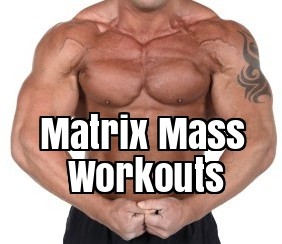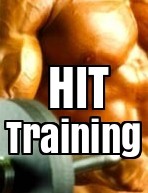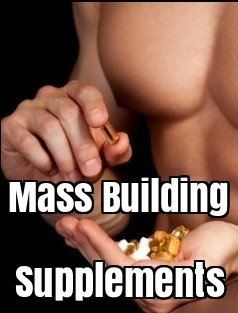

Click Here For Your Free Bodybuilding Magazine
No Squat Leg Workout
How to get big legs without squats
Super thighs without squating???
Every hardcore bodybuilder firmly believes that the barbell squat is one of the best exercises in the gym and an absolute necessity in building awesome thighs. I have to say we agree with at least half of this statement. But due to old injuries (and current ones), body structure or simple personal preference, some people rarely squat and still develop a great pair of powerful quads.
Part of the problem is due to one's mental frame of mind when approaching leg training. A typical way of thinking is if you can't squat then you might as well not go heavy or too intensely on any other thigh exercise. Why bust your butt if you can't do the REAL mass builder? Wrong. Like any other compound exercise, the main benefit from squatting is the ability to train "intensely" using multiple joints. For whatever reason, if you don't squat, the laying angled leg press can give you EVERY bit the workout and growth stimulation that free weight squats provide. But there is one secret, you have to attack the exercise with complete conviction. There are no half-way measures here, if you go light, fiddle around with pleasant pumping workouts, your results will be mediocre.
Many times lifters focus on the leg press once that have sustained lower back or knee injury from regular squats. The angled leg press will protect these vital areas and allow you to train safely for years to come. Because of the design of most modern leg press machines, they are very safe to use. If the safety pegs are set properly, you can focus on squeezing and moving the weight without worrying about failing and having iron crush you. If you fail in the middle of a set, the clips will stop the rack from moving below a pre-determined level, allowing you to train with complete confidence.
The primary movers in squatting or leg presses is the vastus lateralis, vastus medialis, vastus intermedius and the rectus femoris. These for muscles make up the mass of your frontal thighs. It is the rear portion of your legs which leg press stresses a bit less than squatting. These two main muscles are the gluteus maximus (your butt) and the biceps femoris (your hamstrings). So, a couple of extra sets of leg curls will help make up the difference.
Now, lets get to the exercise. Warm up lightly like you would normally at the beginning of your training session. Stretch slowly paying particular attention to your lower back and hamstrings. Position the safety clips at the lowest position you would want the rack to come down. If you can, position the backrest slightly lower than 90 degrees. You'll want your upper torso to be as close to a right angle to your legs. Position your feet shoulder width apart with your toes slightly angling outward. Foot placement should be primarily based on comfort. Use what feels natural to you but avoid extreme wide or narrow positions until you have at least six months of leg press training. There is very little concrete evidence that radical foot placement dramatically develops different areas of your thighs.
Position your bottom so it is flat in the seat. Lay your shoulders against the backrest and grip the stabilizer bars found on the side for support. Lower the platform until your knee angle is 90 degrees and drive the weight up without, locking out your legs. Deep leg presses, beyond 90 degrees, will stress the knees and offer no additional muscle building benefits. Also, locking out the knees at the top takes all the stress completely away from the thigh muscles. During the movement, your lower back MUST stay against the backrest. Raising it up, in an effort to press the weight, is very dangerous to your lumbar muscles and spinal cord. Your legs should be the ONLY thing moving during the exercise.
Explode the weight up as quickly as possible on each rep. In contrast, lower the weight carefully and with control. Since the platform is on a guide, you can focus on pushing with full intensity without worrying about 'losing your balance'. Take two or three deep breathes at the top of each rep and use the air in your lungs to cushion your thighs on each upward contraction. Move the weight in a smooth, continuous manner. A consistent leg press routine will quickly strengthen your quads and add new size and shape to your lower body. Put your mind into each thigh workout for fast results, which will surprise you.
Here are three routines to get you going. Stretch in between each set for maximum growth.
Routine I - Beginner
1) Incline leg press: 3 sets (1st set x 12-15 reps, 2nd set x 8-10 reps and 3rd set x 6-8 reps)
2) Laying leg curls: 2 sets x 15 reps eachRoutine II - Intermediate
1) Leg press/leg extension superset: 4 supersets using the same weight (leg press followed immediately by extensions for 12-15 reps each)
2) Laying leg curls: 1 set x 25 repsRoutine III - Advanced
1) Leg extensions: 2 sets of 20 reps
2) Leg press (feet narrow position): 3 sets of 6-8 reps (to failure)
3) Standing leg curl: 2 sets of 10-12 repsFor the best muscle building workouts checkout Matrix Mass Training.
Click Here For Your Free Bodybuilding Magazine
Bodybuilding Guide | High Intensity Training | Supplements | Articles | Tips | Links | Contact
Disclaimer: This information presented is intended to be used for educational purposes only. The statements made have not been evaluated by the Food and Drug Administration (U.S.). These products are not intended to diagnose, treat, cure or prevent any condition or disease. Please consult with your own physician or health care practitioner regarding any suggestions and recommendations made.

